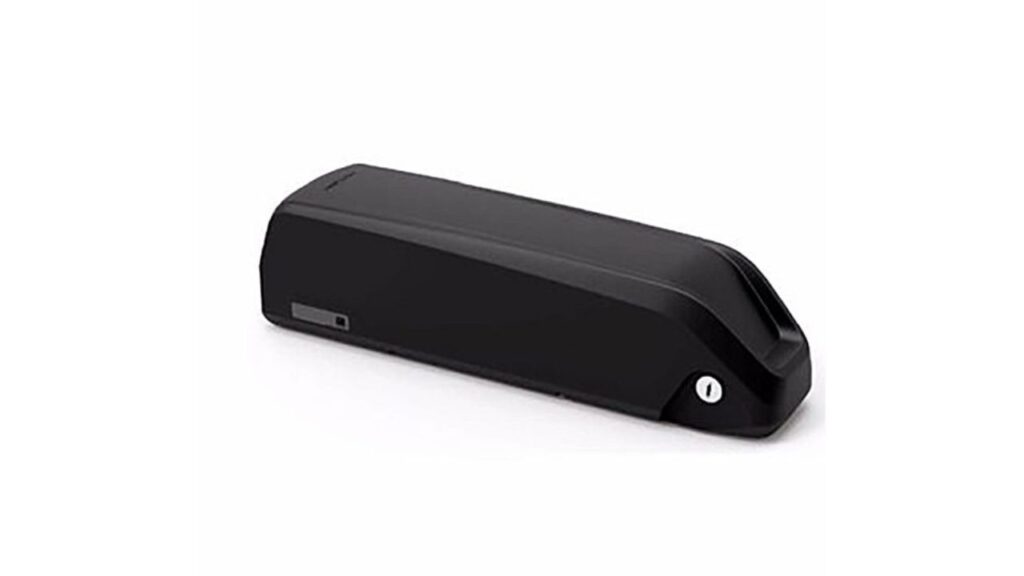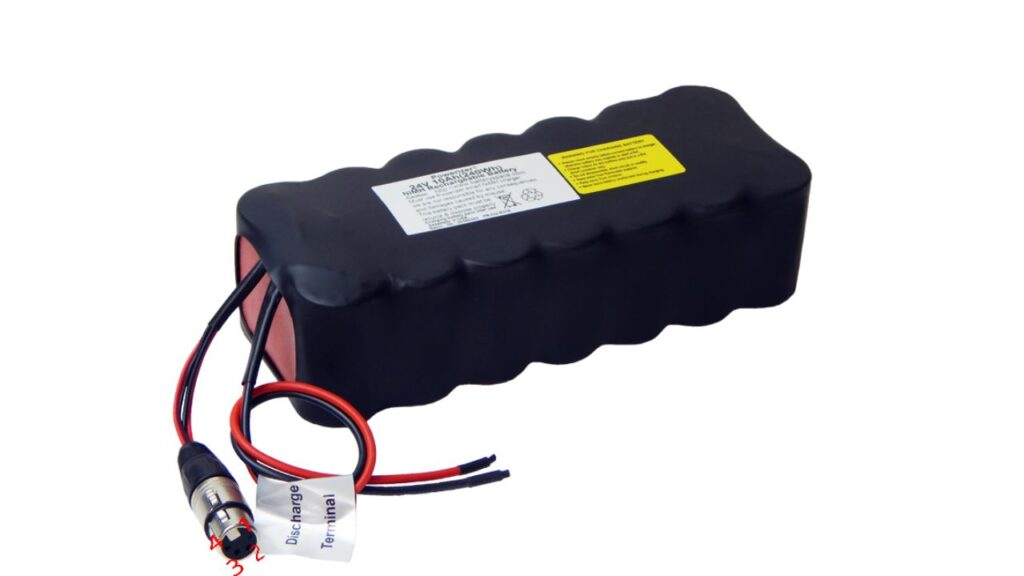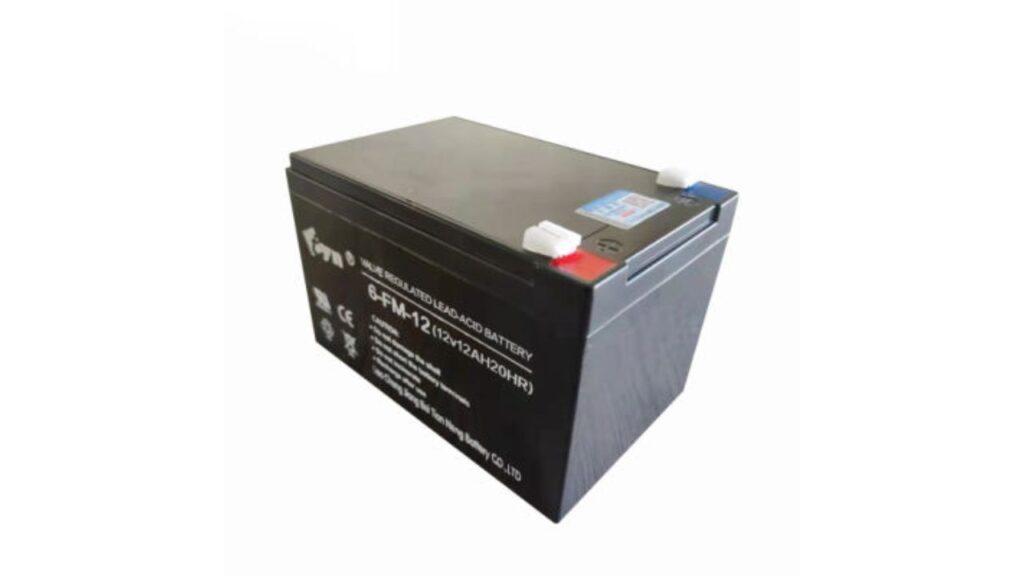One of the most common questions asked about electric bikes is: how long does an electric bike battery last? The short answer is: it depends on several factors.
The factors on which the lifespan of your e-bike battery depends include the type of battery, how often you ride your electric bike, and the maintenance of your e-bike.
In this article, we will explore everything you should know about e-bike batteries, and how you can extend the life of your electric bike battery.
Read the entire article to know how to get the most out of your e-bike battery.
- Also Read: AVENTON vs HIMIWAY (Comparison)
- Also Read: How to Charge an E-Bike Battery
- Also Read: Best Suspension Seatposts for E-Bikes
- Also Read: Cost to Charge E-Bike
How Long Do Electric Bike Batteries Last? A Comprehensive Guide
Electric bikes are a revolution in the modern transportation. They are cost-effective and eco-friendly, and they have changed the way we think about transportation.
E-bikes offer you effortless and smooth ride thanks to their rechargeable batteries and electric motors. They make it easy for you to travel long distances, explore new terrain, and tackle steep hills.

There is one thing that all electric bike riders are concerned about, and that is the lifespan of electric bike batteries.
Now you must be curious that how long do electric bike batteries last. The correct answer is that it varies because it depends on different factors. Based on our rough estimate, an average e-bike battery can last between 3 and 5 years.
There are different factors that determine the actual lifespan of your e-bike battery. They include type of battery, usage of battery, maintenance of battery, and the temperature and humidity of your environment.
This comprehensive guide will provide you with all the information you need to understand the lifespan of your electric bike battery.
You will get familiar with different types of batteries, and all the tips to extend the life of your e-bike battery. The information you will find in this guide will help you maintain your electric bike battery for years to come. Let’s get started!
Understanding Electric Bike Batteries and Their Lifespan
Your e-bike battery is the powerhouse of your electric bike. It provides your bike with the energy to propel you forward. Batteries come in different sizes and shapes.
The type of battery you choose for your electric bike will have a significant impact on its performance and lifespan.
Lithium-ion batteries and lead-acid batteries are the most common types of batteries used for electric bikes. As compared to lead-acid batteries, lithium-ion batteries have a longer lifespan, and they are lighter and more efficient.
The energy density of lithium-ion batteries is also higher. It means they can store a lot more energy in a small space. On the other hand, lead-acid batteries have a shorter lifespan, and they are heavier and less efficient.
The only advantage of lead-acid batteries is that they are cheaper than lithium-ion batteries. It is a good option for you if you are on a low budget.
The lifespan of an e-bike battery is measured in charged cycles. It is the number of times a battery can be fully charged and discharged before it loses its capacity.
Lithium-ion batteries have charge cycles anywhere between 500 to 1000. Lead-acid batteries have charge cycles between 150 to 300.
There are some other factors that also affect the lifespan of your e-bike battery. They include how often you ride your electric bike, how you charge the battery, and how you store the battery.
Types of Electric Bike Batteries
There are mainly three types of electric bike batteries. The lifespan and performance of each type of battery is different.
Lithium-Ion Batteries

The most commonly used batteries for electric bikes are lithium-ion batteries. They can last up to 1000 charge cycles. The latest research proves that the new Lithium Phosphate battery is safer to use and more durable than other types of batteries.
Nickel Batteries

Nickel batteries are like lithium-ion batteries when it comes to power. They can last up to 500 charge cycles. However, the problem with nickel batteries is that they self-discharge at a faster rate.
Lead-Acid Batteries

Lead-acid batteries were used earlier to power electric bikes because of their availability and affordability. They are heavier than lithium-ion batteries, and they have a threshold of 300 charge cycles.
Keep in mind that the lifespan of an electric bike battery also depends on the company that manufactures it and the quality of its materials. A good lead-acid battery from a reputable manufacturer will last longer than a substandard lithium-ion battery.
Choosing the Right Electric Bike Battery for Your Needs
It is important to choose the right electric bike battery when it’s time to replace the current one. Here are some factors that you should consider when choosing a battery for your e-bike:
Compatibility
This is the first thing that you should check because all batteries are not the same. Some batteries may be compatible with your electric bike while others may not. You can find this information in your electric bike’s manual or contact the manufacturer.
Capacity
The capacity of an electric bike battery is measured in watt-hours (Wh). Different batteries have different capacities. A battery with a higher capacity will provide you with a longer range.
You should go for a battery that meets your needs and typical riding habits.
Voltage
Electric bike batteries are available in different voltages, like 24 volts, 36 volts, and 48 volts. A battery with a higher voltage will provide more power to your e-bike. Keep in mind that a higher voltage battery is usually more expensive.
Brand and Quality
The performance and safety of your electric bike is very much dependent on the quality of the battery. We recommend you choose a reputable brand that enjoys good customer reviews. This will ensure you get a quality battery for your e-bike.
Price
The price of electric bike battery ranges from a few hundred dollars to over a thousand dollars. Keep in mind your budget when you choose a replacement, but never compromise on the quality.
Consider the above-mentioned factors when you choose a battery for your electric bike. It will meet your requirements, and it will provide you with excellent performance for the next few years.
Which Battery Should I Choose for My Electric Bike?
You should choose an electric bike battery that has a two-year manufacturer warranty regardless of the battery type. There is a possibility that you may get a defective battery that may discharge quicker than it should. Having a two-year warranty will keep your investment safe.
Most electric bikes today use lithium-ion batteries, but they are more expensive than lead-acid batteries and nickel batteries. Lithium-ion batteries also require more maintenance. They are also sensitive to low and high temperatures.
Why Charge Cycles Are Important for Electric Bikes?
When an electric bike’s battery is emptied from 100% to 0%, that counts as one charge cycle. The battery life of an electric bike’s battery depends on how many times it has been charged.
A battery gradually deteriorates after going through several charge cycles. This shortens the battery life.
Should You Charge Electric Bike Battery Often?
You should charge your electric bike’s battery whenever it reaches 30-60%.
Your electric bike battery and other battery-powered devices tend to discharge even when you are not using them. This phenomenon is called self-discharging.
Excessive self-discharging can do irreparable damage to your battery. It is why we recommend you actively use your e-bike battery.
The Ultimate Guide to Maximizing the Life of Your Electric Bike Battery
This guide will provide you with all the information you need to maximize the life of your electric bike battery.
We will discuss factors that affect the battery life of an electric bike. We will share maintenance tips for extending battery life, and how you should store your electric bike battery for optimum performance.
Factors Affecting the Battery Life of an Electric Bike
There are several factors that can affect the lifespan of an electric bike battery. They can be both internal and external. By understanding these factors, you can extend the life of your battery and ensure that it performs well.
Usage frequency
The battery of your electric bike will wear out quickly if you use it more frequently. If you ride your e-bike every day, you may need to replace the battery sooner. However, if you ride your electric bike a few times a week, then it may need replacement later.
Temperature and humidity
High humidity and extreme temperatures can shorten the lifetime of your electric bike battery. Keep in mind that lithium-ion batteries are generally sensitive to high temperatures. They may degrade quickly if you expose them to heat for an extended period of time.
Charging habits
The way you charge your electric bike battery can also affect its lifespan. Undercharging or overcharging the battery can lead to its premature degeneration. To ensure that your battery lasts as long as possible, we encourage you to follow the manufacturer’s charging instructions.
Storage conditions
It is important that you store your electric bike battery in a cool, dry place when it is not in use. Your battery can degenerate quickly if you leave it in a hot or humid environment or in direct sunlight.
Type of battery
The type of your electric bike battery can significantly affect its lifespan. Lithium-ion batteries last longer than other types of batteries, but they are also expensive.
The best way to get the most out of your electric bike battery is to take the above-mentioned factors into consideration. You should also implement the best practices for e-bike battery use and maintenance.
How to Extend Your Electric Bike’s Battery Life?
Just like any other electrical device, the durability of your e-bike’s battery also depends on how well you maintain it. External factors like high humidity and extreme temperatures have a great impact on battery life.
You should never leave your e-bike outside for long hours, especially if you live in the states like Phoenix and Arizona where the weather is mostly hot and dry.
We encourage you to follow these tips to extend the life of your electric bike battery:
- Whenever you need to charge your battery, use the charger that came with it. Since they optimize it for that purpose.
- You should not charge your battery if it appears to be overheating. Let it cool down first.
- Recharge your e-bike battery after you have used it about halfway. Don’t run it down to 0%.
- If you don’t plan to ride your electric bike for a long time, remove the battery from your e-bike. Turn it on occasionally, and it will prevent excessive self-discharge.
- Don’t unplug your e-bike battery at 100% because it can overcharge it. If you ever need to charge your battery overnight, unplug it as soon as you get up in the morning.
- Always choose a dry and cool place to store your e-bike battery. You should park your electric bike somewhere out of direct sunlight or in a shaded area.
- Make sure you always clean your electric bike battery with a dry towel and not a wet one. Water can cause further corrosion, and it will shorten the life of your e-bike battery.
How to Store Your Electric Bike Battery for Optimum Performance
You must properly store your electric bike battery to ensure that it performs at its best for maximum time. Following are some tips that will enable you to store your e-bike battery for optimum performance.
Store Your Battery in a Cool and Dry Place
Always store your battery in a cool and dry place. Your battery should be away from extreme temperatures, moisture, and direct sunlight. Keep in mind that high temperatures damage the cells of your battery, which reduces its lifespan.
Store Your Battery with a Partial Charge
Always store your electric bike battery with a partial charge. Your battery must have a partial charge of up to 50% if you don’t plan to ride your electric bike for a few weeks or months. It will ensure that your battery cells remain active.
Charge Your Battery Before Storage
If you plan to separately store your e-bike battery, then make sure your it is fully charged. This is necessary to keep your battery cells active and prevent them from degrading in the storage.
Keep Your Battery Away from Metal Objects
You must keep your battery away from metal objects. It is because metal objects can cause a short circuit in your electric bike battery. This is dangerous, and it can damage your battery cells. It is even better if you use a protective case to store your battery.
Charge Your Battery Regularly
It is important to regularly charge your electric bike battery even if you are not using your e-bike. This is vital to keep your keep your battery cells active; otherwise, they can degrade over time.
To keep your electric bike battery in good condition for as long as possible, you must follow the above-mentioned tips when storing it. Keep in mind that different types of batteries may require different storage conditions, so always refer to your e-bike’s manual for specific storage instructions.
Signs That Your Electric Bike Battery Needs Replacing
All batteries, including electric bike batteries, need replacement after a certain time. If you notice any of the following signs, it is time to replace your electric bike battery:

Reduced Range
When your electric bike is not traveling as far as it used to on a single charge, it means your battery is losing its capacity. This is the first sign that you should replace your battery.
Slow Charging
Your battery may be near the end of its life if it takes longer than usual to charge or if it doesn’t seem to be charging at all.
Physical Damage
If the casing of your battery is cracked or damaged, it may affect its performance and could be dangerous. Replace your battery as soon as possible if you notice any physical damage.
Overheating
When your battery gets excessively hot during use, it could be a sign of an internal problem. Do not ignore it because overheating can damage your battery’s cells. It’s important to replace your battery if this occurs. An overheating electric bike battery can also cause a fire.
Age
No matter how well electric bike batteries are maintained, they eventually need replacing. The lifespan of most e-bike batteries is 3-5 years. It also depends on how often you use it, and how you store it.
You should replace your electric bike battery if you notice any of the above-mentioned signs. We recommend you consult your electric bike manual for replacement instructions. You can also contact your e-bike’s manufacturer for advice.
How to Dispose of Your Electric Bike Battery Safely
All batteries, including electric bike batteries, have a limited lifespan. When that ends, you must dispose of them properly. The following tips can help you dispose of your e-bike battery safely:
Check Local Regulations
It is important to check local regulations before you dispose of your electric bike battery. There are specific rules for disposing of lithium-ion batteries in some areas. These rules are specifically for batteries that are used in electric bikes.
Recycle
It is the most environmentally friendly way to dispose of an e-bike battery. You can check your local recycling center to see if they can accept your lithium-ion battery. Nowadays, some e-bike shops also offer battery recycling services.
Don’t Throw in the Trash
You should never throw away your e-bike battery in the trash. This is because lithium-ion batteries can catch fire or even explode.
Discharge the Battery
You must fully discharge your e-bike battery before disposing of it. You can do this by using a battery discharger or use the battery until it fully discharge.
Transport Safely
It is important you transport your e-bike battery to a recycling center in a non-conductive container or bag. You should also keep it away from heat sources to ensure safe transportation.
You should follow the above-mentioned tips to dispose of your electric bike battery safely and responsibly. Keep in mind that proper disposal of your electric bike battery prevents potential hazards and protects the environment.
Conclusion
Electric bike batteries can last anywhere from 300 to 1000 charge cycles, depending on the type, use and quality of the battery. While some last much longer, most riders find that a typical battery will last between 3 and 5 years of regular use.
If you want to maximize the life of your electric bike battery, it is important to keep it charged, store it in a cool place, and avoid exposing it to extreme temperatures. When the lifespan of your battery ends, you should dispose of it properly and not throw it away in the trash.
Frequently Asked Questions
How long does an electric bike battery Last?
It varies depending on the size of the battery and the type of bike you have. A lithium-ion electric bike battery should last between 500-1000 charge cycles or around 3 to 5 years.
How long do e-bike batteries last on one charge?
Lithium-ion batteries usually last between 25-50 miles on a single charge, depending on the battery capacity. Factors such as terrain, hills, wind and weight can affect the range of the battery. So it’s important to check the specifications of your e-bike to understand how long you can expect it to last.
Is it OK to leave my e-bike battery on charge overnight?
Yes, it is ok to leave your e-bike battery on charge overnight. It is safe and the battery will fully charge when you wake up. Make sure not to charge the battery for longer than is necessary because this may lead to overcharging, and it can damage battery cells.
Do e-bike batteries drain when not in use?
Yes, e-bike batteries do slowly drain while they are not in use. Storing a fully depleted battery can damage the cells, so it’s best to keep the charge between 60-70%. Keeping the battery stored in normal room temperatures, between 55-75°F, will also help prolong its life.
How can I extend my e-bike battery life?
To extend the life of your e-bike battery, charge it indoors at room temperature in a dry location. It’s important to regularly charge the battery even when it’s not in use for long periods. Additionally, clean the battery with a dry cloth and keep the battery away from metal objects.